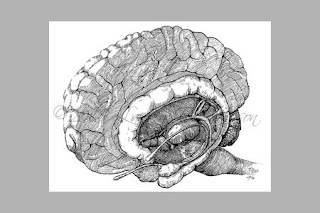Well I've done it. Like becoming a member of the now ubiquitous Facebook (which I was able to successfully ignore, if only for the first six months of it's existence) I have joined the masses and decided to start a blog. Why did I wait so long (and cringe when anyone would bring it up)?
A) I didn't want a diary.
B) Anti-Peer Pressure. If that's a word. Definitely not one of those to join simply because "everyone else is doing it."
C) I'd rather spend my free time riding horses.
And yet, like Facebook, here I am. Hey, it's networking right?
So I am a medical illustrator, or soon will be, as I plan to graduate in May from the University of Illinois Chicago's program in Biomedical Visualization (MS). I am also an equestrian, a neat freak, a musician, a neuroscience major, an animal-lover, and, frankly, a bit of a nerd. So it will be interesting to see how this turns out. A little of this, a little of that, some art, some humor, some science....Happy reading!

























.jpg)
